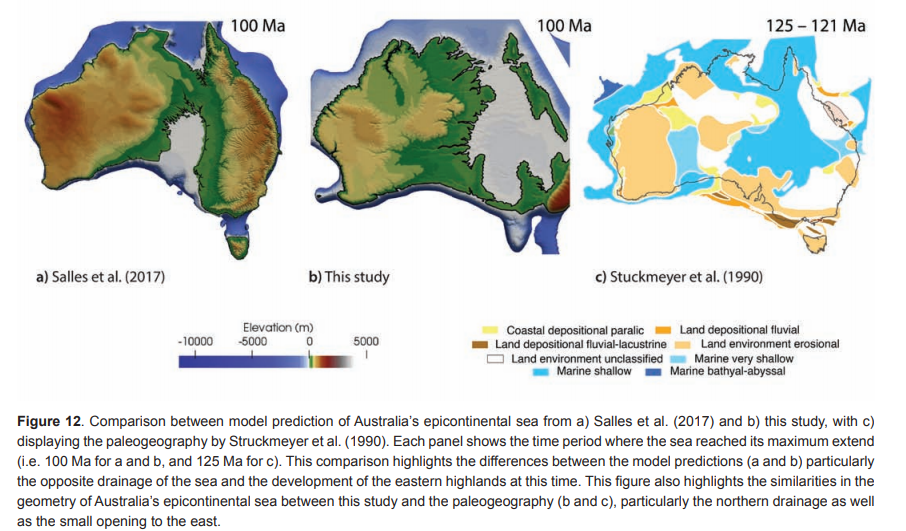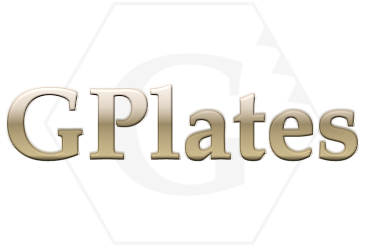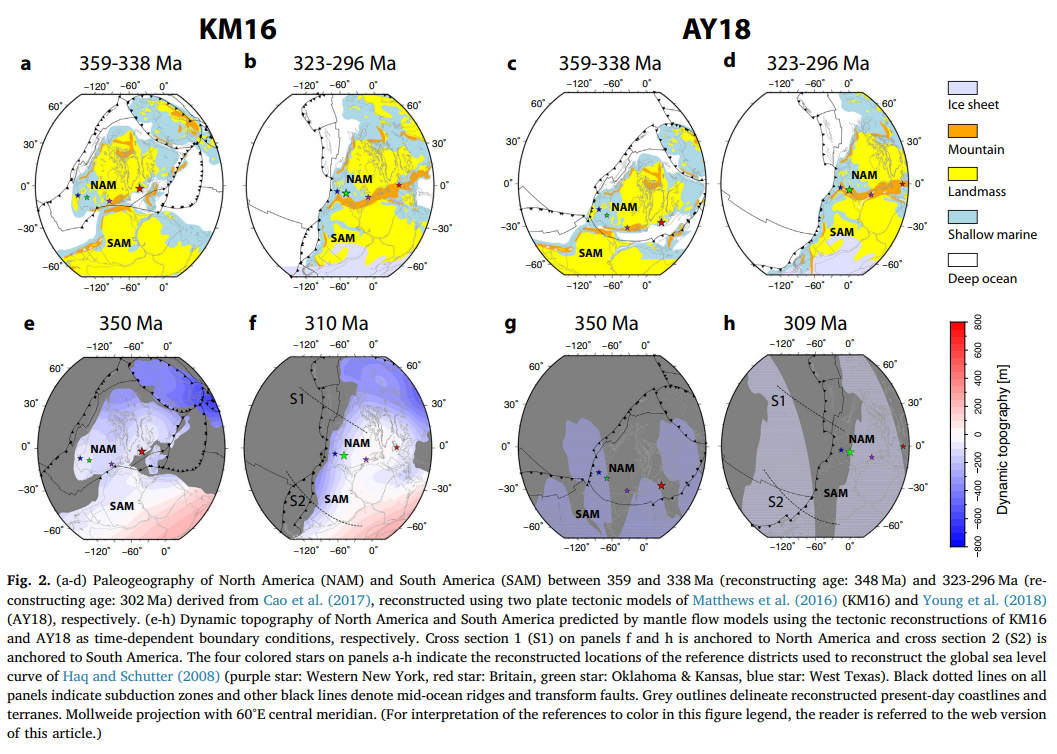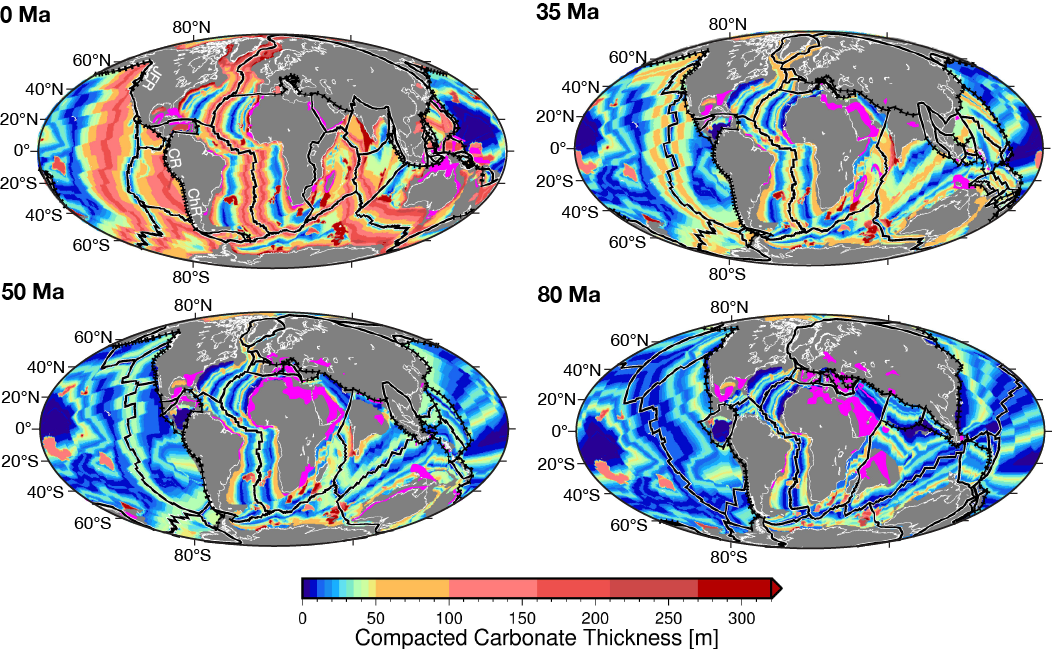 Citation
Citation
Matthews, K.J., Maloney, K.T., Zahirovic, S., Williams, S.E., Seton, M., and Müller, R.D. (2016). Global plate boundary evolution and kinematics since the late Paleozoic, Global and Planetary Change, 146, 226-250. DOI: 10.1016/j.gloplacha.2016.10.002
Abstract
Many aspects of deep-time Earth System models, including mantle convection, paleoclimatology, paleobiogeography and the deep Earth carbon cycle, require high-resolution plate models that include the evolution of the mosaic of plate boundaries through time. We present the first continuous late Paleozoic to present-day global plate model with evolving plate boundaries, building on and extending two previously published models for the late Paleozoic (410–250 Ma) and Mesozoic-Cenozoic (230–0 Ma). We ensure continuity during the 250–230 Ma transition period between the two models, update the absolute reference frame of the Mesozoic-Cenozoic model and add a new Paleozoic reconstruction for the Baltica-derived Alexander Terrane, now accreted to western North America. This 410–0 Ma open access model provides a framework for deep-time whole Earth modelling and acts as a base for future extensions and refinement.
This model is available with a default mantle reference frame, a hybrid reference frame using moving hotspots and a true polar wander corrected paleomagnetic reference frame (see paper for details) as well as with a paleomagnetic reference frame. For times before 83 Ma, the Pacific is shifted to maintain relative motions with the circum-Pangea continents – largely due to the fact that no paleomagnetic reference frames exist that extend to the birth age of the Pacific Plate. The paleomagnetic reference frame is based on data from Torsvik, T. H., Van der Voo, R., Preeden, U., Mac Niocaill, C., Steinberger, B., Doubrovine, P. V., van Hinsbergen, D. J., Domeier, M., Gaina, C., and Tohver, E., 2012, Phanerozoic polar wander, palaeogeography and dynamics: Earth-Science Reviews, v. 114, no. 3, p. 325-368, DOI: 10.1016/j.earscirev.2012.06.007.
… Read more…
 GPlates is a free desktop software for the interactive visualisation of plate-tectonics. The compilation and documentation of GPlates 2.2 data was primarily funded by AuScope National Collaborative Research Infrastructure (NCRIS).
GPlates is a free desktop software for the interactive visualisation of plate-tectonics. The compilation and documentation of GPlates 2.2 data was primarily funded by AuScope National Collaborative Research Infrastructure (NCRIS).



















 Database that has been assembled for use with the program, GPlates. The paleomagnetic database presented here is made up of 1638 paleopoles compiled by Rob Van der Voo for his book, Paleomagnetism of the Atlantic, Tethys, and Iapetus Oceans. In addition to the spreadsheet of paleopoles, we have constructed five feature collections that can be used to visualize the paleomagnetic data using GPlates: 1) site localities, 2) paleopoles, 3) declination arrows, 4) paleolatitude labels, and a set of time-dependent rasters which plot the site locations, paleopoles, declination arrows, and paleolatitude labels on a set of plate tectonic reconstructions ( 0 – 540 Ma). The last section of this report is a detailed discussion of the paleomagnetic data for three-time intervals (40Ma, 285Ma, and 450Ma). The Supplementary Materials includes a program, “PaleoPolePlotter”, which GPlates users can use to build paleopoles, declination arrows, and paleolatitude labels from user-defined data sets
Database that has been assembled for use with the program, GPlates. The paleomagnetic database presented here is made up of 1638 paleopoles compiled by Rob Van der Voo for his book, Paleomagnetism of the Atlantic, Tethys, and Iapetus Oceans. In addition to the spreadsheet of paleopoles, we have constructed five feature collections that can be used to visualize the paleomagnetic data using GPlates: 1) site localities, 2) paleopoles, 3) declination arrows, 4) paleolatitude labels, and a set of time-dependent rasters which plot the site locations, paleopoles, declination arrows, and paleolatitude labels on a set of plate tectonic reconstructions ( 0 – 540 Ma). The last section of this report is a detailed discussion of the paleomagnetic data for three-time intervals (40Ma, 285Ma, and 450Ma). The Supplementary Materials includes a program, “PaleoPolePlotter”, which GPlates users can use to build paleopoles, declination arrows, and paleolatitude labels from user-defined data sets Citation
Citation